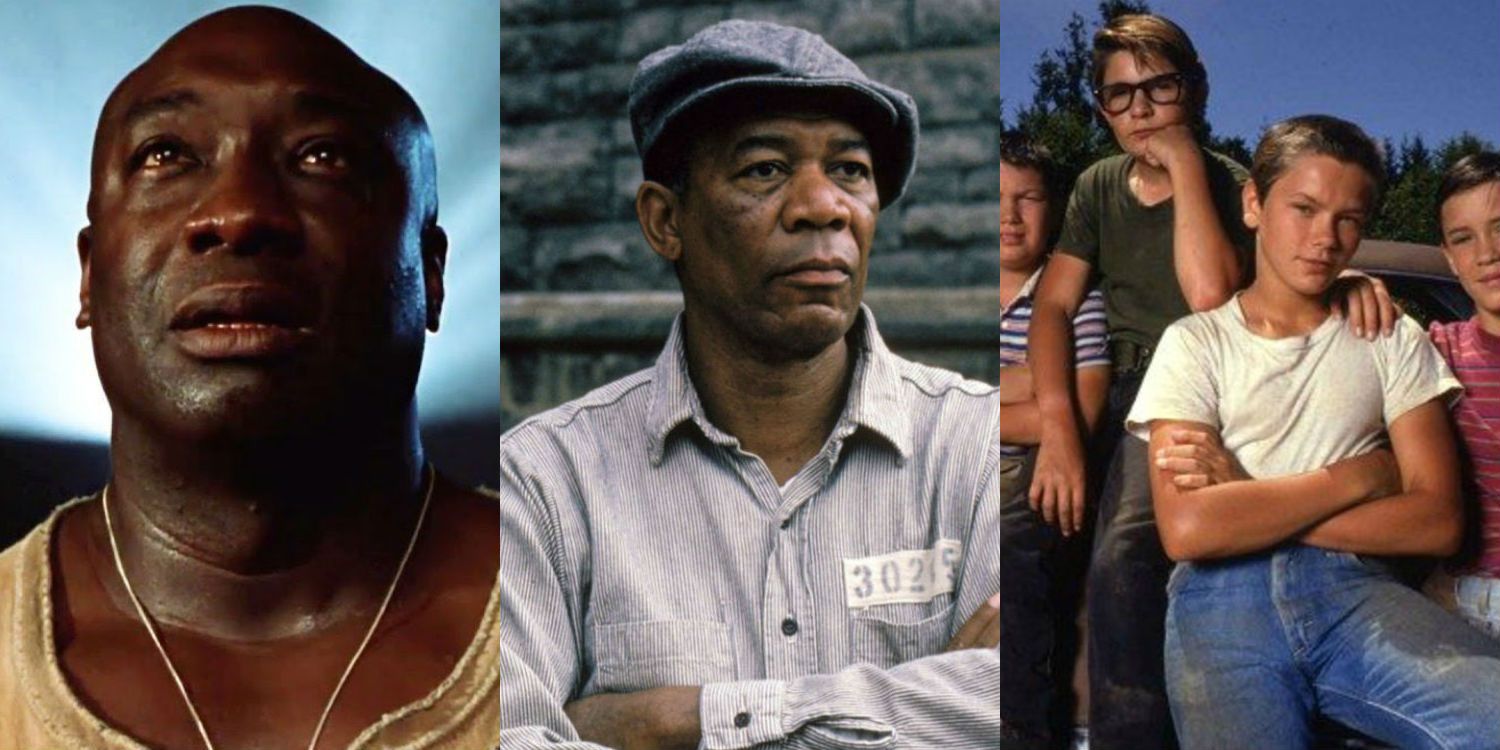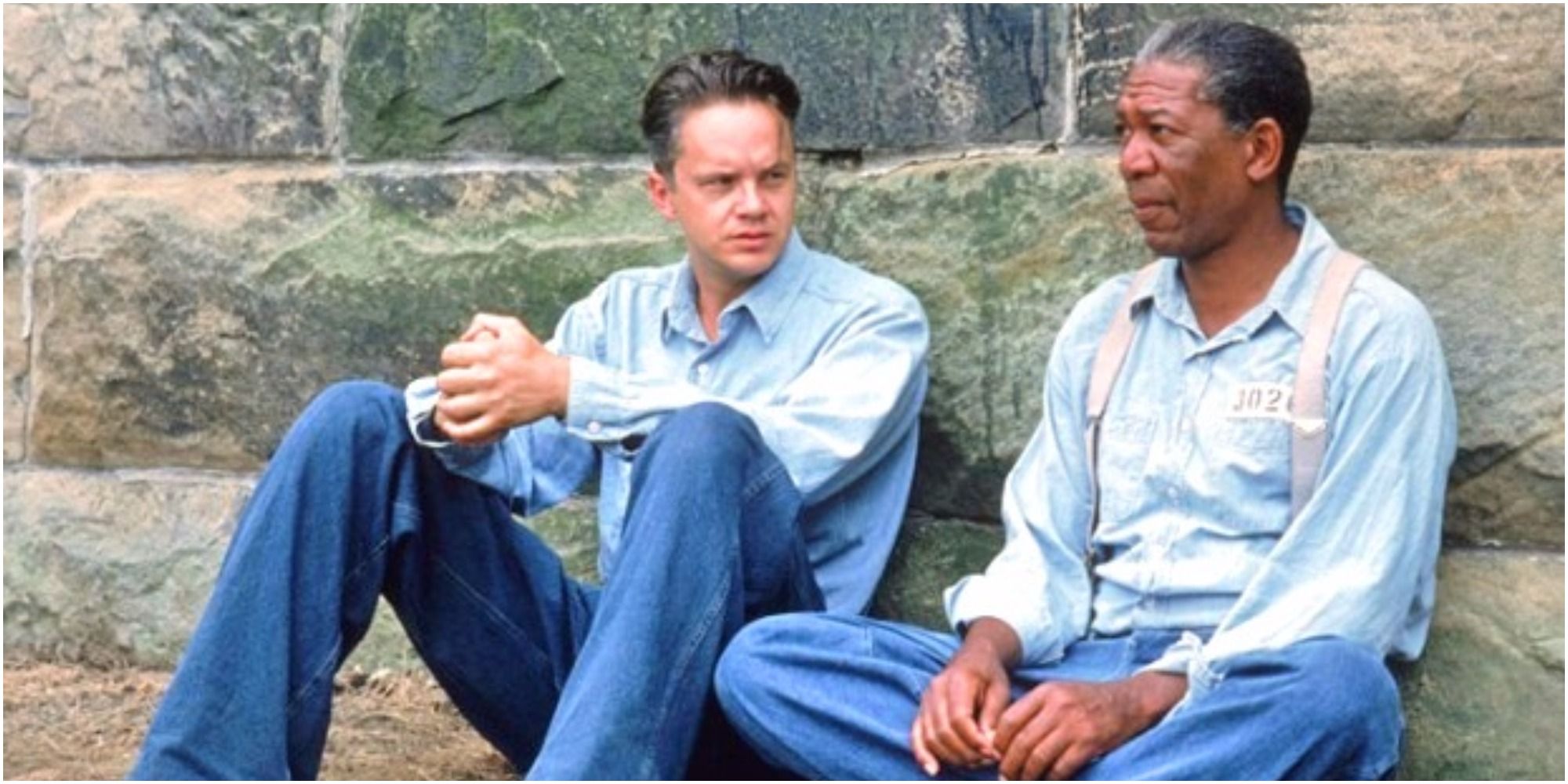As an author, Stephen King is known as the master of horror, but his most critically acclaimed movie adaptations tend to be of non-horror stories. That's not say that there aren't some great, acclaimed horror movies based on King books, including, The Shining, IT, Carrie, and more. But for whatever reason, Hollywood's track record for adapting King's horror tales tends to be much more hit and miss than his non-horror stories. There may not be as many of them, but their success rate is definitely higher.
The three most prominent examples of this phenomena are 1986's Stand by Me, 1994's The Shawshank Redemption, and 1999's The Green Mile, the latter two of which were both written and directed by Frank Darabont. All three received glowing reviews from most critics of the time, and are still very highly regarded today. The Green Mile earned four Oscar nominations, and was a huge box office hit, while Stand by Me received two Oscar nominations and made $52 million on an $8 million budget. The Shawshank Redemption was a box office disappointment, but it earned seven Oscar nominations and is today considered by some to be one of the greatest films in history.
Putting aside Hollywood's award-giving bodies' general bias against horror, there's clearly something special about the times studios' adapt King's non-horror work. Here's why we think that might be.
The Best Stephen King Movies AREN'T Horror - Here's Why
While Stephen King is primarily known as a horror writer, anyone familiar with his novels and short stories outside the genre is well aware that his talents extend beyond the realm of fright. King has a knack for building worlds and developing characters that lends itself just as well to interpersonal drama as it does to horror. One thing working against King's horror movie adaptations though is his tendency to write supernatural villains and scenarios that can be very hard to believably realize onscreen. While an evil car and and a giant rat monster might work on the page, they can come off as silly when done visually. By contrast, a story about two men in prison, or four friends coming of age is much easier for most people to relate to, and can be recreated much easier without special effects.
Even The Green Mile, which does include supernatural elements, is presented in a much more down to Earth way than say the IT movies, which are stuffed with bad CGI monstrosities. Also, while horror is beloved by millions, there are still millions more that don't like it. The masses at large don't tend to love gore, big slimy monsters, and scenes designed to scare the hell out of them. Thus, when a non-horror King story is adapted, more people are inclined to go see it, and experience tales that are still unmistakably King, but probably won't require one to sleep with the light on after leaving the theater. With this increased mass appeal, a film's reputation for greatness more easily spreads, leading a film to become more iconic.
There's also a third factor worth considering, one that ties into the above. With Shawshank Redemption and Green Mile directed by Frank Darabont, and Stand by Me directed by Rob Reiner, it seems like King's non-horror stories tend to attract better filmmakers, Stanley Kubrick and Brian De Palma notwithstanding. It's no wonder, as they have more potential to catch on with the general moviegoer, instead of just the horror devotee. Reiner also directed 1990's Misery, which is kind of horror, but sort of skirt's the edge of the genre's standard trappings, and definitely isn't King's usual fare. As usual, Oscar nominations were had, and reviews were glowing. It would appear that the formula for critical success with a King adaptation is to stay away from the things that go bump in the night.


